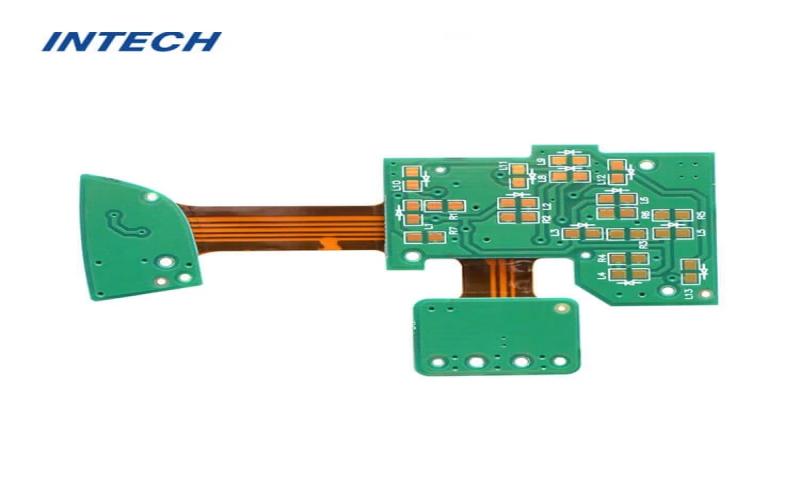What are the heat dissipation methods of the circuit board?
Date:2023-06-08 15:08:29
1. High heat generating device plus radiator, heat conduction plate
When there are a few devices in the PCB that generate a large amount of heat (less than 3), a radiator or heat pipe can be added to the heating device. When the temperature cannot be lowered, a radiator with a fan can be used to enhance the heat dissipation effect. . When there are many heating components (more than 3), a large heat dissipation cover (board) can be used, which is a special radiator customized according to the position and height of the heating components on the PCB or a large flat radiator Cut out the height and position of different components. Buckle the cooling cover on the component surface as a whole, and contact each component to dissipate heat. However, due to the poor consistency of the components when they are assembled and soldered, the heat dissipation effect is not good. Usually, a soft thermal phase change thermal pad is added on the surface of the component to improve the heat dissipation effect.
2. Use reasonable wiring design to achieve heat dissipation
Since the thermal conductivity of the resin in the board is poor, and the copper foil lines and holes are good conductors of heat, increasing the residual ratio of copper foil and increasing the heat conduction holes are the main means of heat dissipation. To evaluate the heat dissipation capability of PCB, it is necessary to calculate the equivalent thermal conductivity (nine eq) of the insulating substrate for PCB, which is a composite material composed of various materials with different thermal conductivity.
3. For equipment cooled by free convection air, it is better to arrange the integrated circuits (or other devices) in a vertical or horizontal manner.
4. Arrange devices with high power consumption and high heat generation near the best heat dissipation position.
Do not place devices with high heat generation on the corners and edges of the printed board unless there is a heat sink near it. When designing the power resistor, choose a larger device as much as possible, and make it have enough heat dissipation space when adjusting the layout of the printed board.
5. High heat dissipation devices should reduce the thermal resistance between them as much as possible when connecting with the substrate.In order to better meet the requirements of thermal characteristics, some thermal conductive materials (such as coating a layer of thermal silica gel) can be used on the bottom surface of the chip, and a certain contact area can be kept for the device to dissipate heat.
6. In the horizontal direction, arrange high-power devices as close to the edge of the printed board as possible to shorten the heat transfer path; in the vertical direction, arrange high-power devices as close to the top of the printed board as possible to reduce the temperature of other devices when these devices are working. Impact.
7. The devices on the same printed board should be arranged according to their calorific value and heat dissipation degree as much as possible. Devices with small calorific value or poor heat resistance (such as small signal transistors, small-scale integrated circuits, electrolytic capacitors, etc.) The uppermost flow (inlet) of the cooling airflow, devices with high heat generation or good heat resistance (such as power transistors, large-scale integrated circuits, etc.) are placed at the most downstream of the cooling airflow.
8. Devices that are sensitive to temperature are best placed in areas with lower temperatures (such as the bottom of the device). Never place it directly above the heat-generating device. Multiple devices are preferably arranged staggered on the horizontal plane.
9. Avoid the concentration of hot spots on the PCB, distribute the power evenly on the PCB as much as possible, and keep the temperature performance of the PCB surface uniform and consistent.
It is often difficult to achieve strict uniform distribution during the design process, but it is necessary to avoid areas with too high power density to avoid hot spots that affect the normal operation of the entire circuit. If conditions permit, it is necessary to conduct thermal performance analysis of printed circuits. For example, the thermal performance index analysis software module added to some professional PCB design software can help designers optimize circuit design.

